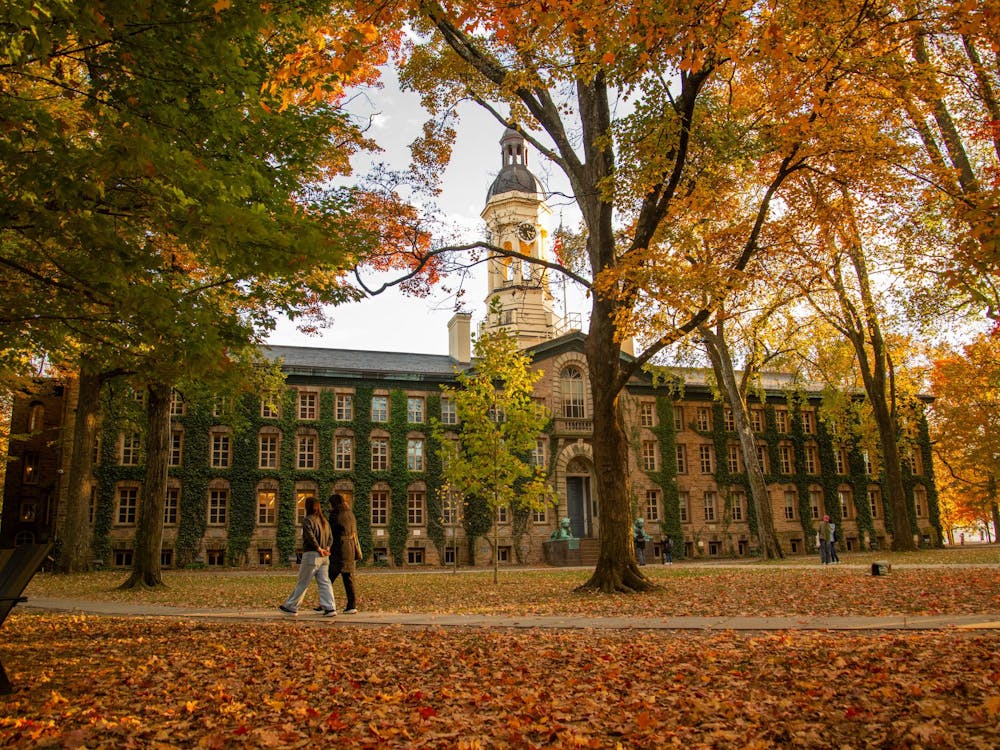It is a big, glossy coffee-table book with orange-and-black lettering and an early-20th-century image of the campus on its cover. "Princeton University: The First 250 Years," though published a decade ago for the University's 250th birthday, remains in circulation today as a basic resource on Princeton's multifaceted history and development.
I had never thought of being its author. In fact, I had only vaguely heard of the coming anniversary when University Vice President and Secretary Bob Durkee '69 telephoned me in Washington in August 1993, three months after my retirement from 25 years on The Washington Post. He invited me to campus to meet with members of the steering committee of the anniversary celebration headed by economics professor Burton Malkiel. They wanted a commemorative book, a new illustrated history of Princeton by someone who knew the place well. They promised all the research support that might be needed, complete editorial freedom and the invaluable support of J.T. Miller '70, who found and selected the illustrations.
Why me? I had been an undergraduate (Class of 1952) and chairman (editor-in-chief) of The Daily Princetonian. I had been a visiting Ferris Professor of Journalism teaching a one-semester course on the campus three times, in the fall semesters of 1977, 1982 and 1986. I had great affection and regard for the place, though I also saw its faults — and proposed to tell its story "warts and all." I had been a professional journalist and, at that point, the author of two books on the Vietnam War and the Cold War, respectively. (I have since written three more, including the Princeton volume.)
More than anything else, I suspect, my greatest qualification was who I was not. I was not a faculty member with strong academic ties and views. The bicentennial history published in 1946 was written by Professor Thomas Jefferson Wertenbaker, a distinguished historian, author and president of the American Historical Association. He ended his account of Princeton's history 50 years earlier in 1896 and by doing so, avoided dealing with the controversies of Woodrow Wilson's presidency of Princeton and his entry into politics. As a journalist, I had scant qualifications compared to Wertenbaker, but I also had fewer inhibitions.
My decision to become a journalist long predated Princeton. My closest boyhood friend recalled that when I came in from the playground in third grade, I told him, "When I grow up, I want to be a newspaper reporter." Why I thought so is unknown. My parents subscribed to several newspapers, but I don't recall giving them special attention. When I was a copy boy during high school on my home town paper, The Atlanta Constitution, its great and courageous editor, Ralph McGill, gave me advice to obtain the broadest possible education in history, economic, politics and anything else that interested me. Princeton was made to order.
The class I joined in September 1948 was the first "normal" post-World War II class, without the tide of veterans who earlier had reclaimed the places that they left to fight the war. Now Princeton was reaching out geographically and, tentatively, in other ways as well. Our class had the highest proportion of high school students (35 percent) compared to prep school graduates. It was the first class without the narrow Jewish quota that had prevailed earlier. Still, we had no black students and, of course, no women.
Even so, the campus was not lacking in controversy. As sophomores, more than 600 of my nearly 800 classmates vowed to boycott the eating clubs if they failed to provide an invitation to each classmate who wished to join. This kept the campus in turmoil until the clubs grudgingly complied. Amid the rise of McCarthyism and other blemishes on the nation, a democratic and egalitarian spirit was wafting through the University. The news and editorials in the 'Prince' generated an important part of that.
In some respects, the Princeton of today has little in common with that of a half-century ago, but when I meet students or faculty on the campus now, I can sense the imprint of what has gone before. Whether due to its residential nature, its high educational standards or the persistence of tradition, Princeton has a very strong culture in which the impact of the past is indelible and great. If the illustrated history helps to preserve that special grace, it will have served a useful purpose. Don Oberdorfer '52 was a Wilson School major and is author of "Princeton University: The First 250 Years." He is a Journalist-in-Residence in the Nitze School of Advanced International Studies of Johns Hopkins University.







